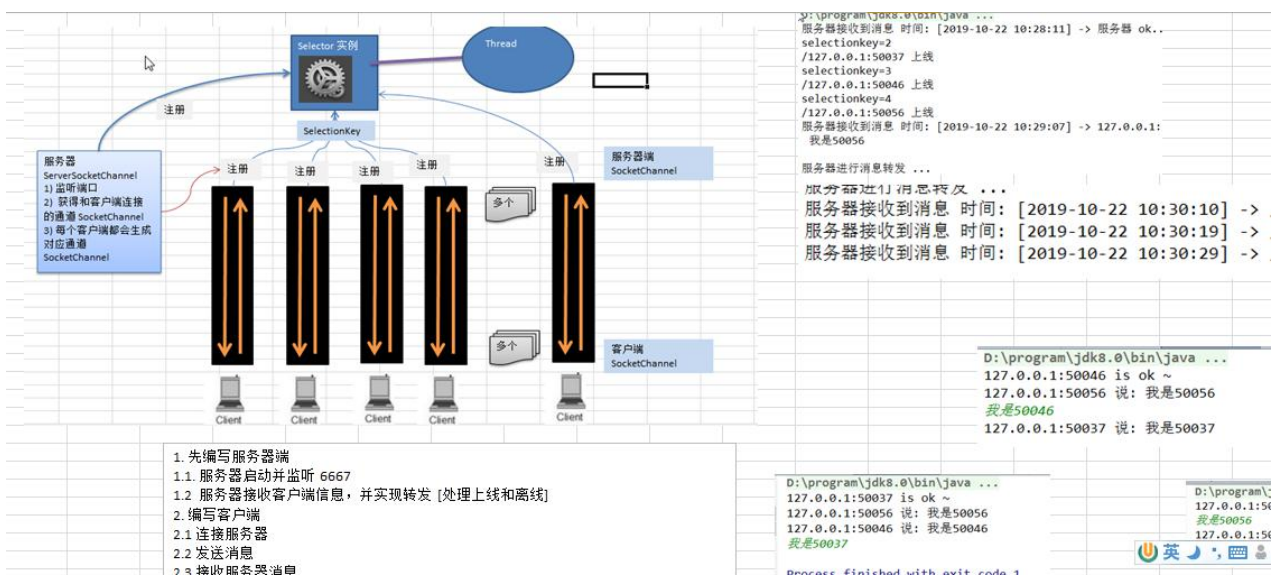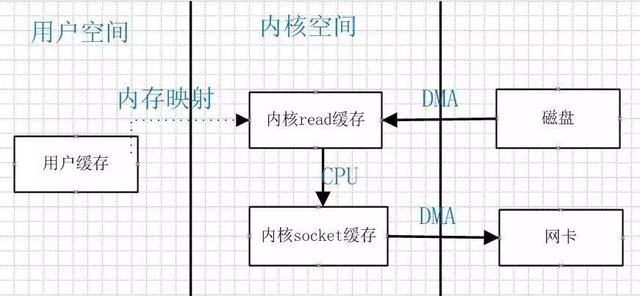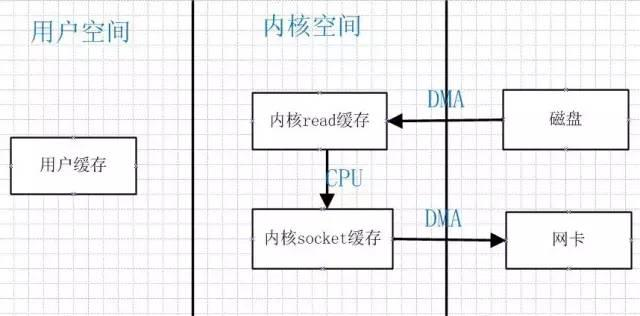nio实现群聊系统
实例要求
1) 编写一个 NIO 群聊系统,实现服务器端和客户端之间的数据简单通讯(非阻塞)
2) 实现多人群聊
3) 服务器端:可以监测用户上线,离线,并实现消息转发功能
4) 客户端:通过 channel 可以无阻塞发送消息给其它所有用户,同时可以接受其它用户发送的消息(有服务器转发
得到)
示意图分析

代码
1、服务端
import java.io.IOException;
import java.net.InetSocketAddress;
import java.nio.ByteBuffer;
import java.nio.channels.*;
import java.util.Iterator;
public class GroupChatServer {
//定义属性
private Selector selector;
private ServerSocketChannel listenChannel;
private static final int PORT = 6667;
//构造器
//初始化工作
public GroupChatServer() {
try {
//得到选择器
selector = Selector.open();
//ServerSocketChannel
listenChannel = ServerSocketChannel.open();
//绑定端口
listenChannel.socket().bind(new InetSocketAddress(PORT));
//设置非阻塞模式
listenChannel.configureBlocking(false);
//将该listenChannel 注册到selector
listenChannel.register(selector, SelectionKey.OP_ACCEPT);
}catch (IOException e) {
e.printStackTrace();
}
}
//监听
public void listen() {
System.out.println("监听线程: " + Thread.currentThread().getName());
try {
//循环处理
while (true) {
int count = selector.select();
if(count > 0) {//有事件处理
//遍历得到selectionKey 集合
Iterator<SelectionKey> iterator = selector.selectedKeys().iterator();
while (iterator.hasNext()) {
//取出selectionkey
SelectionKey key = iterator.next();
//监听到accept
if(key.isAcceptable()) {
SocketChannel sc = listenChannel.accept();
sc.configureBlocking(false);
//将该 sc 注册到seletor
sc.register(selector, SelectionKey.OP_READ);
//提示
System.out.println(sc.getRemoteAddress() + " 上线 ");
}
if(key.isReadable()) { //通道发送read事件,即通道是可读的状态
//处理读 (专门写方法..)
readData(key);
}
//当前的key 删除,防止重复处理
iterator.remove();
}
} else {
System.out.println("等待....");
}
}
}catch (Exception e) {
e.printStackTrace();
}finally {
//发生异常处理....
}
}
//读取客户端消息
private void readData(SelectionKey key) {
//取到关联的channle
SocketChannel channel = null;
try {
//得到channel
channel = (SocketChannel) key.channel();
//创建buffer
ByteBuffer buffer = ByteBuffer.allocate(1024);
int count = channel.read(buffer);
//根据count的值做处理
if(count > 0) {
//把缓存区的数据转成字符串
String msg = new String(buffer.array());
//输出该消息
System.out.println("form 客户端: " + msg);
//向其它的客户端转发消息(去掉自己), 专门写一个方法来处理
sendInfoToOtherClients(msg, channel);
}
}catch (IOException e) {
try {
System.out.println(channel.getRemoteAddress() + " 离线了..");
//取消注册
key.cancel();
//关闭通道
channel.close();
}catch (IOException e2) {
e2.printStackTrace();;
}
}
}
//转发消息给其它客户(通道)
private void sendInfoToOtherClients(String msg, SocketChannel self ) throws IOException{
System.out.println("服务器转发消息中...");
System.out.println("服务器转发数据给客户端线程: " + Thread.currentThread().getName());
//遍历 所有注册到selector 上的 SocketChannel,并排除 self
for(SelectionKey key: selector.keys()) {
//通过 key 取出对应的 SocketChannel
Channel targetChannel = key.channel();
//排除自己
if(targetChannel instanceof SocketChannel && targetChannel != self) {
//转型
SocketChannel dest = (SocketChannel)targetChannel;
//将msg 存储到buffer
ByteBuffer buffer = ByteBuffer.wrap(msg.getBytes());
//将buffer 的数据写入 通道
dest.write(buffer);
}
}
}
public static void main(String[] args) {
//创建服务器对象
GroupChatServer groupChatServer = new GroupChatServer();
groupChatServer.listen();
}
}
//可以写一个Handler
class MyHandler {
public void readData() {
}
public void sendInfoToOtherClients(){
}
}
2、客户端
import java.io.IOException;
import java.net.InetSocketAddress;
import java.nio.ByteBuffer;
import java.nio.channels.SelectionKey;
import java.nio.channels.Selector;
import java.nio.channels.SocketChannel;
import java.util.Iterator;
import java.util.Scanner;
import java.util.Set;
public class GroupChatClient {
//定义相关的属性
private final String HOST = "127.0.0.1"; // 服务器的ip
private final int PORT = 6667; //服务器端口
private Selector selector;
private SocketChannel socketChannel;
private String username;
//构造器, 完成初始化工作
public GroupChatClient() throws IOException {
selector = Selector.open();
//连接服务器
socketChannel = socketChannel.open(new InetSocketAddress("127.0.0.1", PORT));
//设置非阻塞
socketChannel.configureBlocking(false);
//将channel 注册到selector
socketChannel.register(selector, SelectionKey.OP_READ);
//得到username
username = socketChannel.getLocalAddress().toString().substring(1);
System.out.println(username + " is ok...");
}
//向服务器发送消息
public void sendInfo(String info) {
info = username + " 说:" + info;
try {
socketChannel.write(ByteBuffer.wrap(info.getBytes()));
}catch (IOException e) {
e.printStackTrace();
}
}
//读取从服务器端回复的消息
public void readInfo() {
try {
int readChannels = selector.select();
if(readChannels > 0) {//有可以用的通道
Iterator<SelectionKey> iterator = selector.selectedKeys().iterator();
while (iterator.hasNext()) {
SelectionKey key = iterator.next();
if(key.isReadable()) {
//得到相关的通道
SocketChannel sc = (SocketChannel) key.channel();
//得到一个Buffer
ByteBuffer buffer = ByteBuffer.allocate(1024);
//读取
sc.read(buffer);
//把读到的缓冲区的数据转成字符串
String msg = new String(buffer.array());
System.out.println(msg.trim());
}
}
iterator.remove(); //删除当前的selectionKey, 防止重复操作
} else {
//System.out.println("没有可以用的通道...");
}
}catch (Exception e) {
e.printStackTrace();
}
}
public static void main(String[] args) throws Exception {
//启动我们客户端
GroupChatClient chatClient = new GroupChatClient();
//启动一个线程, 每个3秒,读取从服务器发送数据
new Thread() {
public void run() {
while (true) {
chatClient.readInfo();
try {
Thread.currentThread().sleep(3000);
}catch (InterruptedException e) {
e.printStackTrace();
}
}
}
}.start();
//发送数据给服务器端
Scanner scanner = new Scanner(System.in);
while (scanner.hasNextLine()) {
String s = scanner.nextLine();
chatClient.sendInfo(s);
}
}
}
零拷贝
概念
从字面意思理解就是数据不需要来回的拷贝,大大提升了系统的性能。
传统I/O模型
缓冲区是所有I/O的基础,I/O讲的无非就是把数据移进或移出缓冲区;进程执行I/O操作,就是向操作系统发出请求,让它要么把缓冲区的数据排干(写),要么填充缓冲区(读);下面看一个java进程发起read请求加载数据大致的流程图:

进程发起read请求之后,内核接收到read请求之后,会先检查内核空间中是否已经存在进程所需要的数据,如果已经存在,则直接把数据copy给进程的缓冲区;如果没有内核随即向磁盘控制器发出命令,要求从磁盘读取数据,磁盘控制器把数据直接写入内核read缓冲区,这一步通过DMA完成;接下来就是内核将数据copy到进程的缓冲区;
如果进程发起write请求,同样需要把用户缓冲区里面的数据copy到内核的socket缓冲区里面,然后再通过DMA把数据copy到网卡中,发送出去;
mmap 优化
1) mmap 通过内存映射,将文件映射到内核缓冲区,同时,用户空间可以共享内核空间的数据。这样,在进行网络传输时,就可以减少内核空间到用户空间的拷贝次数。如下图
2) mmap 示意图

sendFile优化
1) Linux 2.1 版本 提供了 sendFile 函数,其基本原理如下:数据根本不经过用户态,直接从内核缓冲区进入到Socket Buffer,同时,由于和用户态完全无关,就减少了一次上下文切换
2) 示意图和小结

数据传送只发生在内核空间,所以减少了一次上下文切换;但是还是存在一次copy,能不能把这一次copy也省略掉,Linux2.4内核中做了改进,将Kernel buffer中对应的数据描述信息(内存地址,偏移量)记录到相应的socket缓冲区当中,这样连内核空间中的一次cpu copy也省掉了;
注:零拷贝,是从操作系统的角度来说的。因为内核缓冲区之间,没有数据是重复的(只有 kernel buffer 有 一份数据)。
mmap 和 sendFile 的区别
1) mmap 适合小数据量读写,sendFile 适合大文件传输。
2) mmap 需要 4 次上下文切换,3 次数据拷贝;sendFile 需要 3 次上下文切换,最少 2 次数据拷贝。
3) sendFile 可以利用 DMA 方式,减少 CPU 拷贝,mmap 则不能(必须从内核拷贝到 Socket 缓冲区)。
案例
1、服务端
package com.atguigu.nio.zerocopy; import java.net.InetSocketAddress; import java.net.ServerSocket; import java.nio.ByteBuffer; import java.nio.channels.ServerSocketChannel; import java.nio.channels.SocketChannel; //服务器 public class NewIOServer { public static void main(String[] args) throws Exception { InetSocketAddress address = new InetSocketAddress(7001); ServerSocketChannel serverSocketChannel = ServerSocketChannel.open(); ServerSocket serverSocket = serverSocketChannel.socket(); serverSocket.bind(address); //创建buffer ByteBuffer byteBuffer = ByteBuffer.allocate(4096); while (true) { SocketChannel socketChannel = serverSocketChannel.accept(); int readcount = 0; while (-1 != readcount) { try { readcount = socketChannel.read(byteBuffer); }catch (Exception ex) { // ex.printStackTrace(); break; } // byteBuffer.rewind(); //倒带 position = 0 mark 作废 } } } }
2、客户端
package com.atguigu.nio.zerocopy; import java.io.FileInputStream; import java.net.InetSocketAddress; import java.nio.channels.FileChannel; import java.nio.channels.SocketChannel; public class NewIOClient { public static void main(String[] args) throws Exception { SocketChannel socketChannel = SocketChannel.open(); socketChannel.connect(new InetSocketAddress("localhost", 7001)); String filename = "protoc-3.6.1-win32.zip"; //得到一个文件channel FileChannel fileChannel = new FileInputStream(filename).getChannel(); //准备发送 long startTime = System.currentTimeMillis(); //在linux下一个transferTo 方法就可以完成传输 //在windows 下 一次调用 transferTo 只能发送8m , 就需要分段传输文件, 而且要主要 //传输时的位置 =》 课后思考... //transferTo 底层使用到零拷贝 long transferCount = fileChannel.transferTo(0, fileChannel.size(), socketChannel); System.out.println("发送的总的字节数 =" + transferCount + " 耗时:" + (System.currentTimeMillis() - startTime)); //关闭 fileChannel.close(); } }